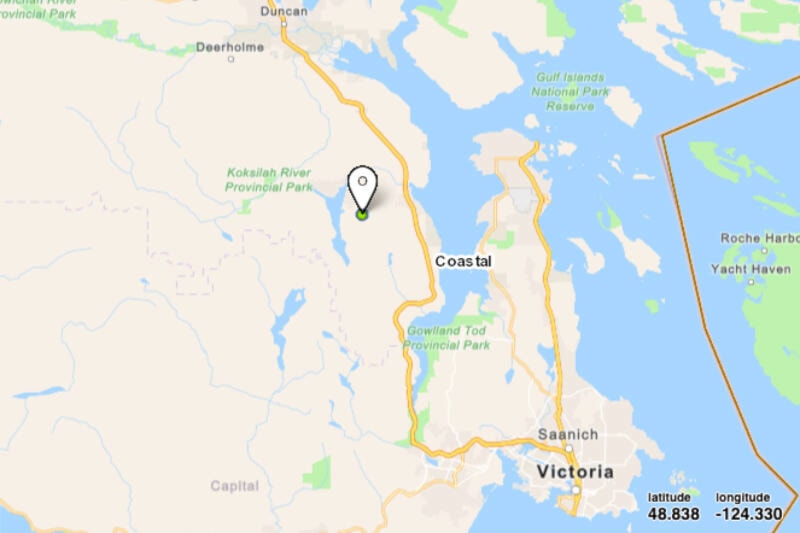Fire season is underway. Southern Vancouver Island’s had its first officially reported wildfire on April 5 — though the small human-caused spot fire near Shawnigan Lake was quickly dealt with.
“We had dispatched a response officer who attended and determined that our crews were not required, as the fire was quickly brought under control by people on site who had remained on site until the fire was extinguished,” said Rebecca Grogan, a fire information officer for BC Wildfire Service.
The fire grew to about two metres by five metres before it was put out, Grogan added.
It was about 1.5 kilometres east of Shawnigan Lake in the Strathcona Heights area, which put it in the Shawnigan Lake Fire Department’s jurisdiction. BC Wildfire had responded before they had accurate coordinates for the fire.
Though early in the season, Grogan said it is not unusual, and does not necessarily represent an indication of a difficult season ahead.
The Coastal Fire Centre begins tracking fires for the season on April 1. The area includes Vancouver Island as well as the Lower Mainland, Sunshine Coast and mid-B.C. coast. Most years there are one to three reported fires in that zone by mid-April.
BC Wildfire has had three fires reported so far this fire season in the coastal region, in addition to one just north of Port Alberni that happened in March, and is considered part of the 2023 fire season.
So far in April, in addition to Shawnigan Lake, there were two small fires near Chilliwack that were reported on April 3 and put out by a BC Wildfire Initial Attack crew. One of those was a pile fire that started under “suspicious conditions.”
Grogan said all the fires so far have been well under a hectare in size.
This is not to say that if drought conditions persist that the area isn’t in for a bad fire season, especially considering Vancouver Island’s snowpack was at 49 per cent of normal as of April 1. It is just too soon to tell.
“A lot depends on the amount of spring rain we receive, especially in June, which is a key month,” Grogan said in an email.
The snowpack could have an impact on alpine areas, however.
“The low snowpack could mean earlier lightning-caused fires because alpine areas are snow-free earlier in the year with time to dry out and be susceptible to fires sparked by lightning strikes,” Grogan wrote.
On the positive side, unlike other parts of the province, where fires have continued to smoulder through the winter, the Island does not have any holdover fires from 2023.
“And the precipitation we received in the last 2 months has helped reduce our spring fire risk,” she said.
READ MORE: B.C.’s snowpack lowest it’s been since 1970, raising risk of drought



